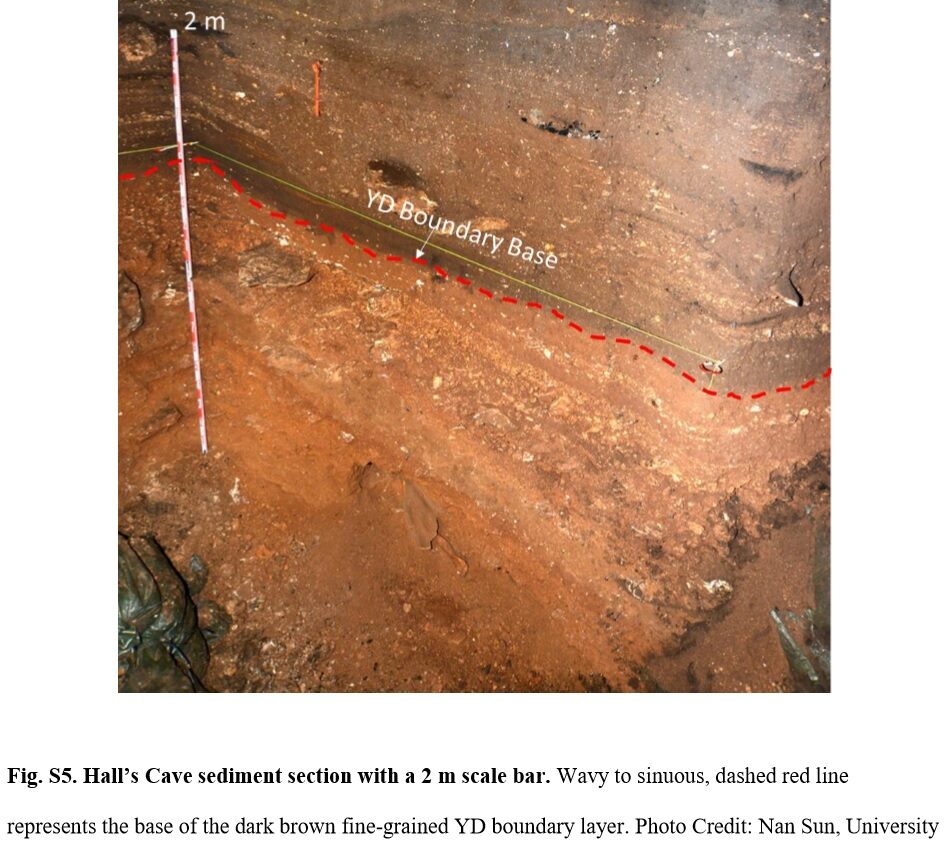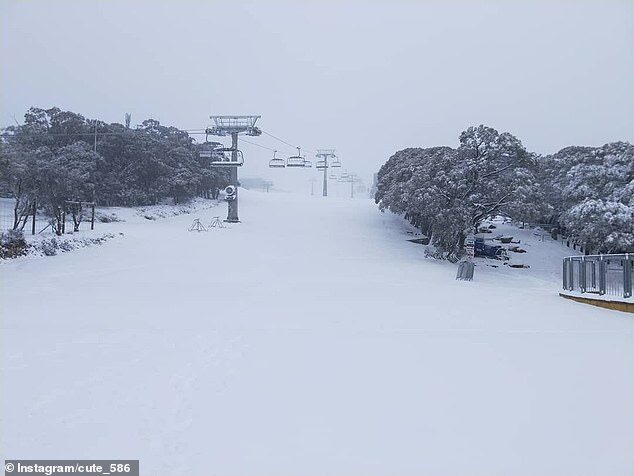On July 31
st 2020, Sun
et al. published a paper in
Science Advances [1] that suggests the Younger Dryas cooling event nearly 13000 years ago was triggered by the Laacher See volcanic eruption rather than a cosmic impact, the usual explanation.
Until now, over 60 primary peer-reviewed journal papers together with dozens of supporting responses all agree the Younger Dryas event was caused by Earth's collision with debris from a disintegrating comet. Only one paper has previously suggested it was caused by the Laacher See volcanic explosion - and that paper was thoroughly refuted only a year later.In their new paper, Sun
et al. focus on platinum group elemental abundances, and especially osmium isotope abundances and ratios, found in the sediment of Hall's Cave, Texas. The sediment in this cave, many meters deep, has accumulated over tens of thousands of years, providing a convenient record of environmental conditions near the cave over this time (see photo below). An easily visible transition in the colour of the sediment at a depth around 1.51 m signifies a dramatic change in climate, and has been suggested to indicate the onset of the Younger Dryas climate anomaly when the Northern Hemisphere experienced a sudden return to near ice-age conditions for over 1000 years. This view is supported by the discovery in this boundary layer of the same kinds of microscopic impact debris found at many other Younger Dryas boundary sites across four continents [2]. So, it appears that Hall's Cave is yet another record of this most dramatic and important cosmic impact event, thought to have reset human Cultures and extinguished many species of large animal across the globe. An event that is probably remembered by numerous extant religions, and might even have helped trigger the rise of our own civilisation [3].

© Nan Sun, University
However, the platinum group metal abundances in the sediment around the Younger Dryas boundary layer at Hall's Cave have not previously been investigated. If the prevailing view is correct, we should find anomalies in them very close to this layer, since cosmic impacts generally produce enhancements in several of these elements. For example, the dinosaur-killing Chicxulub impactor was particularly rich in iridium, and coated Earth in an iridium-rich layer of dust and debris. However, we know from analysis of the GISP2 ice core in Greenland, that the Younger Dryas impactor was instead rich in platinum.[4] Since that discovery peaks in platinum concentration within sediments have been used to locate the Younger Dryas boundary accurately at many other sites [5].


Comment: See also: